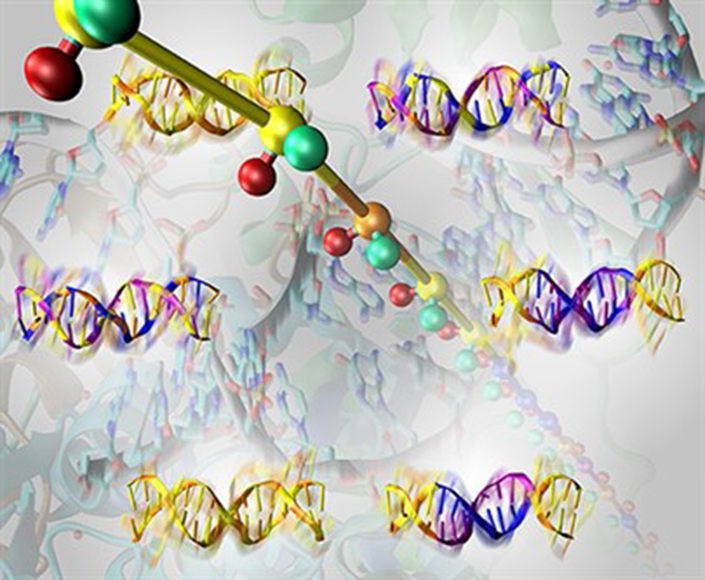Model may explain how nature folds four feet of DNA into a single micron

Image: Dwight Look College of Engineering
Understanding how DNA folds and bends could aid in the design of DNA-based nano-scale devices, says a biomedical researcher in the Dwight Look College of Engineering.
Wonmuk Hwang, an associate professor in the Department of Biomedical Engineering, is working on a motion-based analysis of DNA that could provide an accurate representation of its flexibility.
Hwang uses computer simulation and theoretical analysis to study biomolecules, such as DNA, that carry out essential functions in the human body. His latest model, which provides a motion-based analysis of DNA, is detailed in the scientific journal ACS Nano.
DNA offer physical properties that make it ideal for the construction of nanodevices, Hwang says. For example, the DNA encompassed within the nucleus of one human cell can extend to four feet when stretched out, but thanks to a number of folds, bends and twists, it remains in a space no bigger than one micron – a fraction of the width of a human hair.
Also, DNA is capable of being programmed for self-assembly and disassembly, making it usable for building nano-mechanical devices.
Understanding its unique physical properties is key to unlocking DNA’s potential as a building tool, but previous studies have provided limited information about DNA flexibility, he says. This is largely due to their reliance on static structural models of the molecule.
Unlike those studies, Hwang’s model uses an atomistic simulation so that inherent thermal motion of DNA can be analyzed. Hwang and his team are then able to measure how the DNA strand deforms during this movement.
The key concept in the analysis, Hwang says, is known as ‘principal axis,’ which basically denotes where a rod can most easily bend or where it is the stiffest. For instance, a ruler can bend most easily near its flat side while it is the most difficult to bend near its thin edge, he says. Similar behavior can be seen for DNA.
This motion-based analysis, Hwang says, has produced key findings and biological insights about DNA. For example, a DNA double helix chain can have varying flexibility based on how the sequences of nucleotides on the chain are organized.
What’s more, Hwang’s model revealed DNA responding in specific ways to physical forces – either twisting or bending. This response can be seen when proteins bind to DNA, Hwang explains. When proteins bind without much energetic cost they tend to twist DNA, but high-energy binding results in more of a bending of DNA, Hwang says.
These tiny-sized reactions, Hwang says, could have implications for using DNA as molecular building blocks for nanodevices, such as drug delivery systems and circuitry in plasmonic devices.

